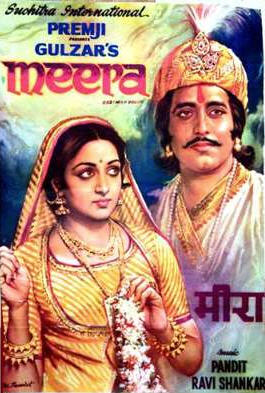Sampooran Singh Kalra and Shrikrishna

On August 18, 1934, a boy was born to Makhan Singh Kalra and Sujan Kaur in the Jhelum District (now in the Punjab province in Pakistan). He was named Sampooran Singh. Sampooran (meaning Complete) had a flair for writing but initially worked as a car mechanic in Bombay. He renounced his name to adopt another one, but in doing so in fact justified his original name as he became ‘Sampoorna‘ in every way – a poet, a storyteller, a screenplay writer, a prolific lyricist, a filmmaker and even a producer. Yes, you could say that Sampooran Singh became truly ‘Sampoorna’ as he perfected every aspect of filmmaking and storytelling. The name that Sampooran Singh adopted was Gulzar. Eighty years later, it seemed interesting to me that Gulzar sahab’s birthday should fall on Janmashtami (Lord Krishna’s birthday according to the Hindu calendar). The feeling was further accentuated when Rahul Roushan on twitter put up a very relevant poster of the film ‘Meera‘ which Gulzar sahab had directed. It struck me Shrikrishna might as well have been named ‘Sampooran’ had he been born in Punjab!
Eighty years later, it seemed interesting to me that Gulzar sahab’s birthday should fall on Janmashtami (Lord Krishna’s birthday according to the Hindu calendar). The feeling was further accentuated when Rahul Roushan on twitter put up a very relevant poster of the film ‘Meera‘ which Gulzar sahab had directed. It struck me Shrikrishna might as well have been named ‘Sampooran’ had he been born in Punjab!
Dashavatara
We know the Dashavatara of Vishnu as mythology but ancient Indian scriptures were not just about religion. Dashavatara is actually the Theory of Evolution told in parables. The first avatar – Matsya (Fish) is an aquatic being. Then comes Koorma (Tortoise), the amphibian. The third avatar is Varaha (Boar), a terrestrial animal followed by fourth avatar of Narasimha (Half man, half beast). The fifth avatar is Waman – the short man or the pygmy. The sixth – Parashuram (Stone Age Man) who works with iron tools. The seventh avatar is Ram (Administrator and social animal). The eighth avatar is Krishna, the Shrimant Yogi (The complete man.) Plato’s Philosopher King is very close to the concept of Krishna! The only avatar above Krishna is Buddha (the Evolved Being). Buddha is more than complete! This can only be succeeded by the tenth avatar, Kalki (Destruction).
The coincidence also reminded me of Acharya Rajneesh’s lecture on Meera. Rajneesh started off by saying that Meera was a calm lake and that he was inviting the listener on a cruise of this lake!
In his discourse on Meera, Osho Rajneesh says that it is significant that Krishna’s symbol should be the peacock feather. It implies that Krishna has all the colours in him. He is complete. He doesn’t have to rush to the Himalayas to find peace. He can stand on the battlefield and can be calm because the Himalaya is within him! His hand holds the flute and the Sudarshan Chakra! Gulzar may have done a lot of things in his lifetime, but poetry is his life; whereas Shrikrishna’s life was poetry!
Gulzar & Shrikrishna
Gulzar’s lyrics have often made references to Krishna even when there was no direct mention of Shrikrishna in the scene or the screenplay. For example in Mora Gora Ang Lai Le, Mohe Shaam rang Dai De (Sujata). In Phir Se Aiyo Badara Bidesi (Namkeen) and then again in Kajara Re (Bunty Aur Bubly) he makes reference to ‘Kaali kamli wala‘. Interestingly the phrase has been used for Krishna, Mohammed, Vishuddhanadji Maharaj, and Meher Baba! Quite like Krishna’s peacock feather!
A very happy birthday to Gulzar and Lord Shrikrishna as well! Enjoy this song of Namkeen where the dark clouds (which is a good omen in this land of the monsoon unlike in the West where dark clouds are regarded ominous) are as abstract as Krishna or as abstract as Gulzar’s poetry – whatever you choose!
Phir Se Aaiyo Badra Bidesi Tere Pankhon Pe ( Asha Bhosle ) RD Burman & Gulzar`s -Namkeen-by Coffee House
© Kaushal S. Inamdar, 2014




2 Comments
Fantastic write up! A different angle. Stumbled upon your blog through this post and read through the past few articles. Simply amazing! The Bond with Kishore and The Religion is Love are also superb articles. Keep writing! I am recommending this to my friends!
Thank you so much! Especially for the recommendation!